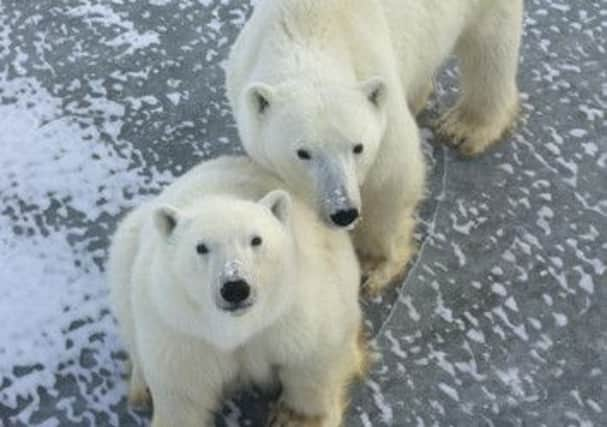Scientists track melting ice cap from space


Research by Leeds University has showed the ice cap in the Arctic Ocean has shrunk by 50 metres since 2012 - losing around a sixth of its original size.
A team led by scientists from the Centre for Polar Observation and Modelling (CPOM) at Leeds used images taken from eight different satelites to measure the extent to which the ice cap had melted.
Advertisement
Hide AdAdvertisement
Hide AdThe findings show that over the last two decades, ice loss from the south-east region of Austfonna, located in the Svalbard archipelago, has increased significantly. In this time, ice flow has accelerated to speeds of several kilometres per year, and ice thinning has spread more than 50km inland – to within 10km of the summit.
Dr Mal McMillan from Leeds University’s CPOM team said: “These results provide a clear example of just how quickly ice caps can evolve, and highlight the challenges associated with making projections of their future contribution to sea level rise,”
The findings of the study were reported online yesterday by the European Space Agency (ESA).
It is the first study to make use of measurements ESA’s latest Earth observation satelite.
Advertisement
Hide AdAdvertisement
Hide AdDr McMillan added: “New satellites, such as the Sentinel-1A and CryoSat missions, are essential for enabling us to systematically monitor ice caps and ice sheets, and to better understand these remote polar environments.”
Melting ice caps and glaciers are responsible for about a third of recent global sea level rise.
Although scientists predict that they will continue to lose ice in the future, determining the exact amount is difficult
“Glacier surges, similar to what we have observed, are a well-known phenomenon,” said Leeds University professor Andrew Shepherd. “However, what we see here is unusual because it has developed over such a long period of time, and appears to have started when ice began to thin and accelerate at the coast.”
Advertisement
Hide AdAdvertisement
Hide AdHe told The Yorkshire Post the findings were “spectacular” and could force scientists to rethink the modelling for how quickly ice caps are expected to melt.
He said: “Until recently ice caps in this part of the world were surrounded by sea ice.
“That has receded dramatically and the ice caps are now being exposed to warmer water
“Whether or not the warmer ocean water and ice cap behaviour are directly linked remains an unanswered question. Feeding the results into existing ice flow models may help us to shed light on the cause, and also improve predictions of global ice loss and sea level rise in the future,”
Advertisement
Hide AdAdvertisement
Hide AdThe university believes long-term observations by satellites are the key to monitoring such climate-related phenomena in the years and decades to come.
CPOM moved to Leeds last year after The UK Natural Environment Research Council awarded the university £5m funding to host it.